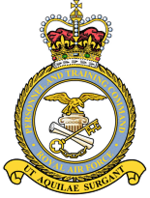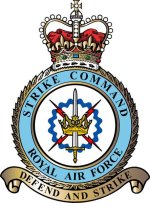
The Royal Air Force's Strike Command was the military formation which controlled the majority of the United Kingdom's bomber and fighter aircraft from 1968 until 2007 when it merged with Personnel and Training Command to form the single Air Command. It latterly consisted of two formations – No. 1 Group RAF and No. 2 Group RAF. The last Commander-in-Chief was Air Chief Marshal Sir Joe French.

Marshal of the Royal Air Force (MRAF) is the highest rank in the Royal Air Force (RAF). In peacetime it was granted to RAF officers in the appointment of Chief of the Defence Staff (CDS), and to retired Chiefs of the Air Staff (CAS), who were promoted to it on their last day of service. While surviving Marshals of the RAF retain the rank for life, the highest rank to which officers on active service are promoted is now air chief marshal. Although general promotions to Marshal of the Royal Air Force have been discontinued since the British defence cuts of the 1990s, further promotions to the rank may still be made in wartime, for members of the Royal Family and certain very senior RAF air officers in peacetime at the discretion of the monarch; all such promotions in peacetime are only honorary, however. In 2012, the then Prince of Wales was promoted to the rank in recognition of his support for his mother, Queen Elizabeth II, in her capacity as head of the armed forces (commander-in-chief), while in 2014 Lord Stirrup, who had served as Chief of the Air Staff and Chief of the Defence Staff for over seven years, was also promoted.
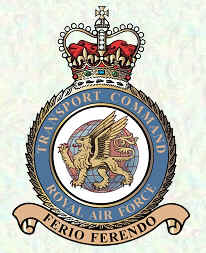
RAF Transport Command was a Royal Air Force command that controlled all transport aircraft of the RAF. It was established on 25 March 1943 by the renaming of the RAF Ferry Command, and was subsequently renamed RAF Air Support Command in 1967.

Royal Air Force High Wycombe or more simply RAF High Wycombe is a Royal Air Force station, situated in the village of Walters Ash, near High Wycombe in Buckinghamshire, England. It houses Headquarters Air Command, and was originally designed to house RAF Bomber Command in the late 1930s. The station is also the headquarters of the European Air Group and the United Kingdom Space Command.

Imjin Barracks is a British Army installation situated near Innsworth in Gloucestershire, that is home to the headquarters of NATO's Allied Rapid Reaction Corps (ARRC).
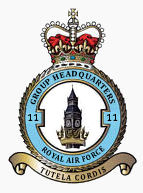
No. 11 Group is a group in the Royal Air Force first formed in 1918. It had been formed and disbanded for various periods during the 20th century before disbanding in 1996 and reforming again in 2018. Its most famous service was in 1940 in the Battle of Britain during the Second World War, when it defended London and the south-east of the United Kingdom from attacks by the German Luftwaffe. It was reformed in late 2018 as a "multi-domain operations group" to ensure the service thinks and acts in a networked way.

Signals Command was the British Royal Air Force's command responsible for control of signals units from 1958 to 1969. It was based at RAF Medmenham near Marlow, Buckinghamshire.

Support Command was a command of the Royal Air Force between 1973 and 1994. The headquarters was located at RAF Brampton in Cambridgeshire.
Air Chief Marshal Sir Joseph Charles French,, often known as Sir Joe French, is a retired senior Royal Air Force officer who was the last Air Officer Commanding-in-Chief RAF Strike Command (2006–07).

Air Marshal Sir Barry Michael Thornton, is a British retired officer who was a senior commander in the Royal Air Force.
Air Chief Marshal Sir Ronald Andrew Fellowes Wilson,, often known as Sir Andrew Wilson and sometimes known informally as Sir Sandy Wilson, is a retired senior Royal Air Force officer.

Training Command was the Royal Air Force's command responsible for flying and ground training from 1936 to 1940 and again from 1968 to 1977. Training Command was formed from RAF Inland Area on 1 May 1936 and absorbed into RAF Support Command on 13 June 1977. From 27 May 1940 to 1 June 1968, Training Command did not exist as its functions were split into Flying Training Command and Technical Training Command.

The Air Member for Personnel (AMP) is the senior Royal Air Force officer who is responsible for personnel matters and is a member of the Air Force Board. The AMP is in charge of all aspects of recruiting, non-operational flying and ground training, career management, welfare, terms, and conditions of service, and resettlement for RAF regular, reserve, and civilian staffs worldwide.
No. 22 Group Royal Air Force is one of six groups currently active in the Royal Air Force (RAF), falling under the responsibility of Deputy Commander-in-Chief (Personnel) in Air Command. Its previous title up until 2018 was No. 22 (Training) Group. The group is responsible for RAF training policy and controlling the Royal Air Force College and the RAF's training stations. As such, it is the direct successor to Training Group. 22 Group provides training to all three service branches of the British Armed Forces; namely the Royal Air Force, the Royal Navy, and the British Army.
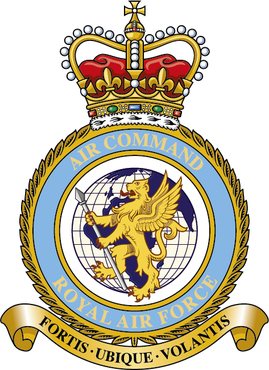
Air Command is the only Command currently active in the Royal Air Force. It was formed by the merger of Royal Air Force Strike and Personnel and Training commands on 1 April 2007, and has its headquarters at RAF High Wycombe, Buckinghamshire.

The Royal Air Force College (RAFC) is the Royal Air Force military academy which provides initial training to all RAF personnel who are preparing to become commissioned officers. The College also provides initial training to aircrew cadets and is responsible for all RAF recruiting along with officer and aircrew selection. Originally established as a naval aviation training centre during World War I, the College was established as the world's first air academy in 1919. During World War II, the College was closed and its facilities were used as a flying training school. Reopening after the War, the College absorbed the Royal Air Force Technical College in 1966.
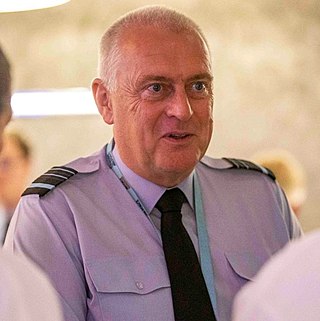
Air Marshal Sir Barry Mark North, is a retired senior Royal Air Force officer, who served as Deputy Commander (Personnel) at RAF Air Command. A helicopter pilot, North has held command appointments at all levels, notably No. 78 Squadron in the Falkland Islands, the Special Forces Flight as a squadron leader and the newly established No. 83 Expeditionary Air Group in the Middle East as an air commodore.
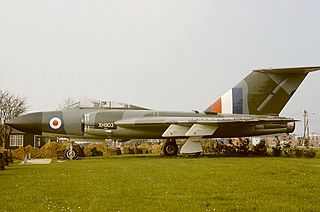
RAF Innsworth was a non flying Royal Air Force station, located on the north side of the city of Gloucester in England. The station closed in March 2008 and for the last 13 years of its life it was the headquarters of Personnel and Training Command. The site was transferred to the British Army and renamed Imjin Barracks becoming the home of the Allied Rapid Reaction Corps in 2010.
Controller Aircraft (CA), originally Controller of Aircraft, is a senior British Ministry of Defence appointment who is responsible for delivering an airworthy aircraft to the Services, whereupon the Service issues a Release to Service (RTS), releasing the aircraft into service. The difference between CA Release and RTS is normally one of Build Standard. Although usually held by a Royal Air Force officer, several civil servants have held the post in the 20th century. The incumbent is a member of the Air Force Board.
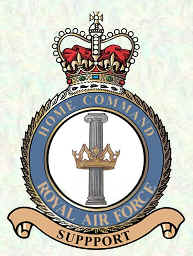
RAF Home Command was the Royal Air Force command that was responsible for the maintenance and training of reserve organisations from formation on 1 February 1939 as RAF Reserve Command with interruptions until it ceased to exist on 1 April 1959.
